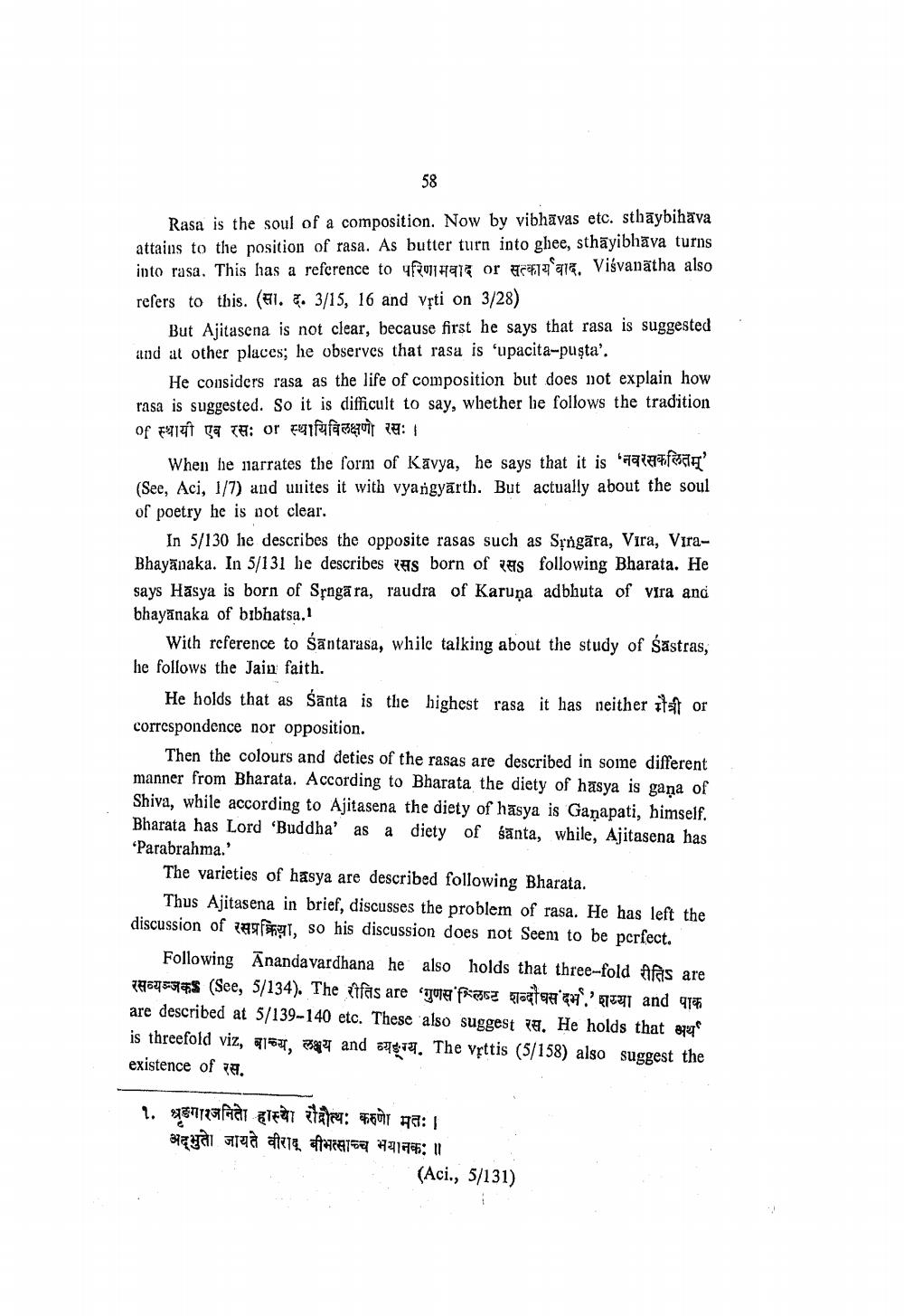________________
Rasa is the soul of a composition. Now by vibhāvas etc. sthāybihāva attains to the position of rasa. As butter turn into ghee, sthāyibhāva turns into rasa. This has a reference to परिणामवाद or सत्कार्यबाद. Visvanatha also refers to this. (F1. &. 3/15, 16 and vrti on 3/28)
But Ajitasena is not clear, because first he says that rasa is suggested and at other places; he observes that rasa is ‘upacita-puşta'.
He considers rasa as the life of composition but does not explain how rasa is suggested. So it is difficult to say, whether be follows the tradition of F141 ga Te: or fuiffe ait ca: 1
When he narrates the form of Kavya, he says that it is atafa' (See, Aci, 1/7) and unites it with vyangyārth. But actually about the soul of poetry he is oot clear.
In 5/130 he describes the opposite rasas such as Sưngāra, Vira, ViraBhayānaka. In 5/131 he describes as born of as following Bharata. He says Hāsya is born of Sțngā ra, raudra of Karuņa adbhuta of vira and bhayānaka of bibhatsa.
With reference to santarasa, while talking about the study of Sastras, he follows the Jain faith.
He holds that as Santa is the highest rasa it has neither tat or correspondence nor opposition.
Then the colours and deties of the rasas are described in some different manner from Bharata. According to Bharata the diety of hasya is gaņa of Shiva, while according to Ajitasena the diety of hāsya is Ganapati, himself. Bharata has Lord 'Buddha' as a diety of śānta, while, Ajitasena has "Parabrahma.'
The varieties of hasya are described following Bharata.
Thus Ajitasena in brief, discusses the problem of rasa. He has left the discussion of af , so his discussion does not seem to be perfect.
Following Anandavardhana he also holds that three-fold Afas are 786453 (See, 5/134). The atfas are gora's gloata , 591 and 91€ are described at 5/139-140 etc. These also suggest ka. He holds that any is threefold viz, 7163, 394 and 4673. The Výttis (5/158) also suggest the existence of रस.
1. 45115faat zich stara: FÔ Ha: अद्भुतो जायते वीरादू बीभत्साच्च भयानकः ॥
(Aci., 5/131)




